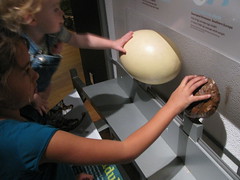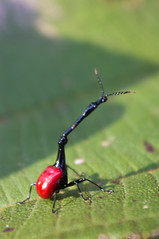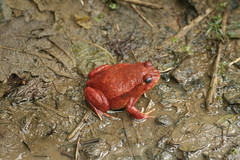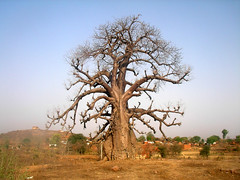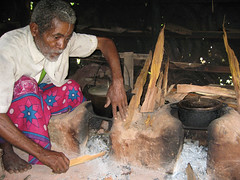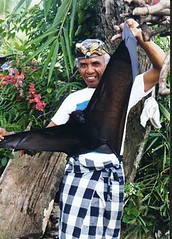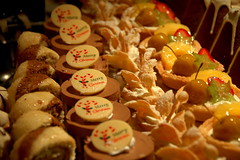Each embassy must have a emergency action plan (EAP) and an emergency action committee (EAC) that develops, modifies, and approves the plan. At the time I was in Yemen, once approved, the plan was sent to Washington with a copy - and I do mean ONE copy - stored in a safe at the embassy because we wouldn't want the bad guys to get those plans. The fact that almost no one else within the embassy could get a copy wasn't as big a problem as it might at first seem. More on that later. But lest I leave an inaccurate impression, I want to state now that much has been done to improve access to those plans. My time in Sanaa was pre-Intranet, so hard copies were the primary documents. Soft copies existed in so many variants it was difficult to keep track of which was the final version. And the soft copies didn't have maps or other pictures worth a thousand words in them.
EAPs are the best example I can think of to prove the truth of President Eisenhower's statement, "Plans are nothing, planning is everything." I was rarely involved in situations requiring implementation of EAPs since my guardian angel kept me out of harm's way, but it was clear to me that no amount of anticipation could make a plan fit an actual event. Plans required that we identify essential positions and non-essential positions so we could quickly identify who would be ordered to leave and who must stay if the situation deteriorated. Ahead of events, position titles were handy shortcuts for these decisions. One consular officer, usually the chief of the section, would be identified as essential as resident American citizens would need assistance. The chief of the political section would be declared essential because that person was expected to have good working relationships with the leaders in the local government. The ambassador was designated essential. In the management section, the chief of the section was designated essential, but positions such as the financial management or human resources officers would be on the non-essential list.
But when an event occurs that triggers the need for ordered departure (we rarely used the word evacuation because that conjures up very negative images), the facts on the ground require adjustments. For example, in a deteriorating situation, the ambassador is often recalled to Washington either for consultations or to make a point with the local government about our government's displeasure with their actions or inaction. Or the chief of the political section may have just arrived and not yet met all the local officials, but a more junior member or the economic section chief has. Or the situation looks like it may require complicated logistics which makes the general service officer essential. Or the political officer may be a single parent who has no one to send the child to for the period of separation. The planning that went into developing the plan answers the question of how many people should remain behind, but the specifics of who should go and who should stay cannot be decided until the event happens.
When an embassy is in ordered departure status, no government employee or contractor is allowed to travel to the country without the specific approval of the Under Secretary for Management. The importance of that will be clearer later.
Another factor that no EAP can figure in is the experiences of those at the embassy when the crisis point hits. In our case,
the ambassador was the DCM in Kuwait when Saddam's troops invaded. And she regretted not being able to get more of the embassy staff out of the country before they were beseiged behind the embassy walls. She didn't plan to repeat that, so her inclination was to order more of us to leave than the plan called for.
Alex was able to come to Sanaa only once while I was there and his timing couldn't have been worse. He arrived just before we ordered dependents and non-essential personnel to leave. Because he was not on my orders, he couldn't be ordered to leave, but the ordered departure completely screwed up our plans. We had planned to travel to the Hadramaut to see the Manhattan of the desert and other interesting archeological sites. We also had planned to fly to Abu Dhabi for a few days. The ambassador insisted we not go to the Hadramaut as traveling there overland would take us very close to tribal areas that were not under control of the government. And if we left Yemen for Abu Dhabi, we wouldn't be able to return. It would not do for a request to the Under Secretary for permission for me to return because the request would have to explain why I was allowed to leave in the first place.
|
Another couple got caught up in the ordered departure as well. Pat was the head of the consular section. Her husband Steve had traveled with a TDY consular officer to Ethiopia where Steve had been a Peace Corps volunteer. They planned to be Ethiopia for just a few days. But the ordered departure began before they could return. The consular officer's suitcases were still in Sanaa. He had to travel to his next destination without them.
Steve's situation was more complicated. He couldn't return to Sanaa, but he didn't want to return to the U.S. because their daughter was getting married in Europe within a month. Pat and Steve planned to take their Rest and Recuperation (R&R) trip to attend the wedding. They had already made a significant adjustment in their plans as Pat had been assigned to two years of language training, one in Washington and the second in Tunis. Their plan had been to travel for the wedding from Tunis once Pat had completed the second year of training and then arrive in Sanaa for her assignment. But Pat was asked to give up the second year of language training in order to arrive in Yemen a year earlier when her predecessor made a last minute decision to retire. Pat gave up the training, arrived early, and now the ordered departure happened two weeks before she and Steve planned to travel for the wedding. The ambassador encouraged Pat to begin her R&R early. She did. Since Steve couldn't return to Sanaa, he also traveled to the wedding location early. I assumed (and you all know how that word can be broken down) that Steve's expenses for the extra weeks would be covered by the evacuation allowance (the only context where that term is used). I learned much later that because Pat traveled on R&R orders, their unexpected additional costs were considered their own, at least the first time the travel vouchers werer submitted. I encouraged Pat to resubmit them with an explanation from me, but I don't know if that happened.
Another couple who were expected in Sanaa also got caught up in the ordered departure after first adjusting their plans to accommodate the embassy. Michael was a first-tour officer who was assigned to Sanaa as general services officer. He expected to complete 30 weeks of Arabic, 4 more than junior officers usually were given for language training, because when he was assigned in the fall of 2000, we expected GSO David to complete his tour which would end in August of 2001. But then David resigned in December. So we asked Michael if he could arrive early in the summer instead of at the end of summer. This complicated Michael's plans because he and his wife had hoped to spend time in Italy with friends on their way to Yemen. After some negotiating, Michael agreed to come in May, provided the embassy would allow him take time off in September so he and his wife could attend a friend's wedding in the U.S. We agreed, and the bargain was struck. Michael kept up his half. We didn't do so well on our end.
First, the ordered departure occurred a week before Michael planned to leave Washington for Sanaa. His departure was delayed. But they had already sold their house, so they didn't have a place to stay. There is a predeparture allowance to provide ten days in a hotel, but the ordered departure extended past that period of time. They hadn't been evacuated, so the evacuation allowance didn't cover them. No one in Washington was willing to find a solution to their situation. I kept contacting new offices on their behalf until someone understood the need for their orders to be amended to provide extra days for predeparture.
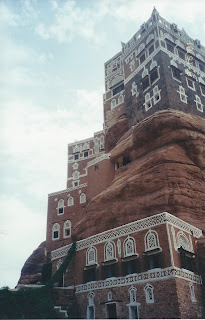 |
| House on a rock |
Eventually the ordered departure was lifted, Michael arrived and got into the swing of things right away. At the end of his 30 weeks of Arabic training, Michael had achieved a higher score than most people did with two full years of training. We were very lucky to have him on our staff. He arranged for the farewell reception for the ambassador at one of the most dramatic locations near Sanaa, the house on a rock. The ambassador and I left Sanaa on the same plane at the end of August. In early September Michael and his wife returned to the U.S. to attend that wedding as we had agreed.
And then two planes flew into the World Trade Towers in New York and another flew into the Pentagon in Arlington, VA on September 11. That resulted in another ordered departure from Yemen. That meant Michael couldn't return to Yemen. But no one from the embassy or the Near East Asian Affairs bureau of State contacted him to tell him he couldn't return. I sent him an e-mail message, his first indication that things had gotten complicated again. This time there was no question that he and his wife would be reimbursed for their expenses while the ordered departure continued. Once the ordered departure ended, Michael rerturned to Sanaa, but his wife decided not to return. She had never been all that keen to live in Yemen. But since they had sold their house, she had nowhere in Washington to live. I think she went to stay with her family elsewhere on the east coast.
Michael went back to Sanaa, but didn't want to be separated from his wife. The State Department hadn't yet started advising new employees that they would be required to serve tours without their family members, so he wasn't prepared for that. He requested his assignment be curtailed. Several others had done the same after the first ordered departure and the Department approved nearly all of them. But since this was Michael's first tour, his request was denied. Michael stayed a bit longer, but he decided eventually to follow his predecessor's action and he resigned from the Foreign Service.
The Department lost a very talented employee.
.jpg)

 by Daniel Y. Go
by Daniel Y. Go








